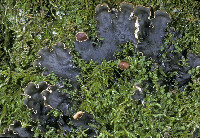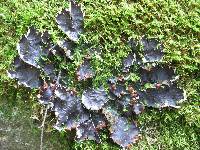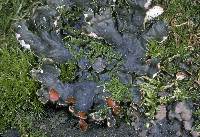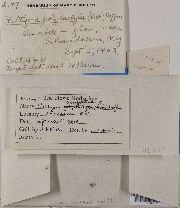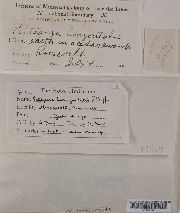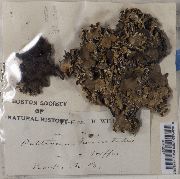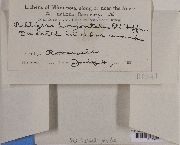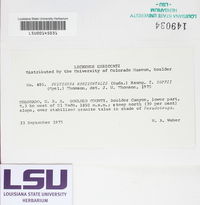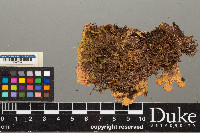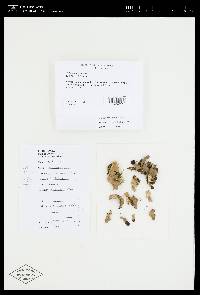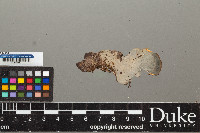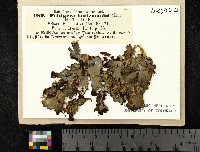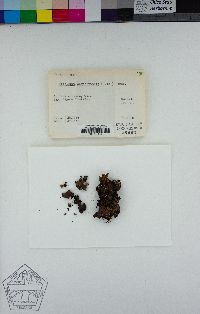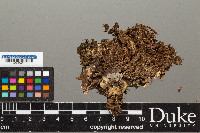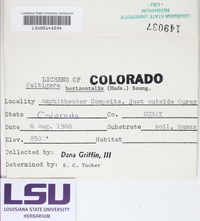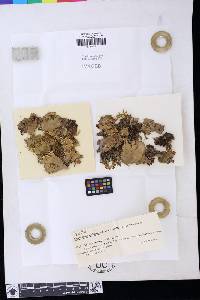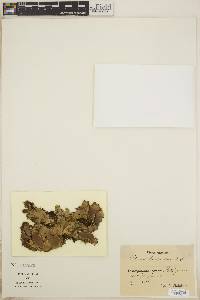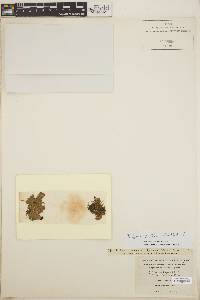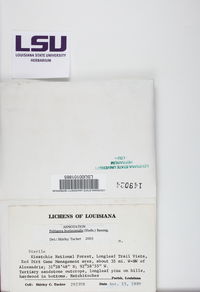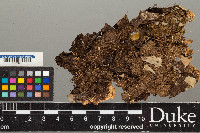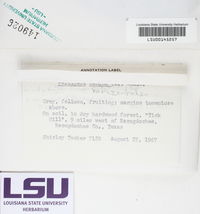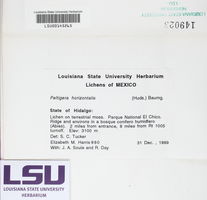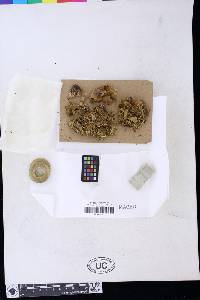
Consortium of Lichen Herbaria
- building a Global Consortium of Bryophytes and Lichens as keystones of cryptobiotic communities -
- Home
- Search
- Images
- Species Checklists
- US States: O-Z >
- US National Parks
- Central America
- South America
- US National Parks
- Southern Subpolar Region
|
|
|
|
Family: Peltigeraceae
[Antilyssa horizontalis (Huds.) Choisy, moreLichen horizontalis Huds., Lichen horizontalis var. horizontalis Huds., Peltidea horizontalis (Huds.) Ach., Peltidea horizontalis var. horizontalis (Huds.) Ach., Peltigera canina var. horizontalis (Huds.) L. Marchand, Peltigera horizontalis f. muscorum (Schaer.) Zahlb., Peltigera horizontalis var. muscorum Schaer., Peltigera rufescens var. horizontalis (Huds.) Spreng.] |
Nash, T.H., Ryan, B.D., Gries, C., Bungartz, F., (eds.) 2004. Lichen Flora of the Greater Sonoran Desert Region. Vol 2. Thallus: foliose, approximately circular in outline, medium to large, 5-10 cm in diam., adnate lobes: +flattened and elongate (1-2 cm wide and up to 4 cm long), imbricate or separate; tips: rounded to subtruncate, sometimes undulate upper surface: gray, or blue-gray, often tinged brown when dry, blackish green when wet, smooth, shiny, without isidia and soredia medulla: white, +loosely interwoven hyphae photobiont: Nostoc lower surface: white, with anastomosing, smooth, flattened veins becoming darker centrally, rhizinate rhizines: brown to black, fasciculate, in concentric circles Apothecia: not seen in Sonoran material, elsewhere +round, on short, ascending lobes, up to 7 mm in diam. disc: flat, dark brown to black ascospores: colorless to pale brown, acicular, 3(-5) septate, 30-50 x 4-7 µm Pycnidia: not seen Spot tests: all negative Secondary metabolites: tenuiorin, methyl gyrophate, gyrophoric acid, hopane-6α,22-diol, hopane-6α,7α,22-triol and unidentified terpenoids. Substrate and ecology: among mosses over soil at high elevations World distribution: temperate and boreal regions of North America, Europe and Asia Sonoran distribution: infrequent in Arizona (Coconino). Notes: If fertile, P. horizontalis is easy to distinguish by its flat, round apothecia and glossy thallus. When sterile, the thick, blunt rhizines growing in +concentric lines are helpful in identifying it, and its chemistry is different from other species, except P. elisabethae, which has schizidiate, veinless thalli. |
|
|
|
Powered by Symbiota



